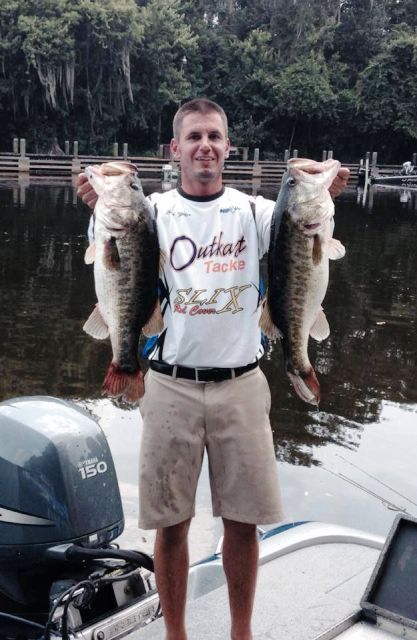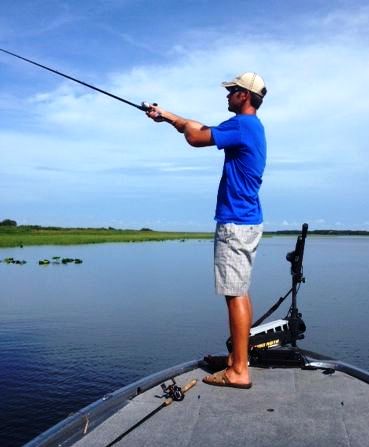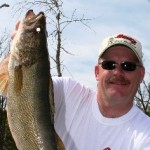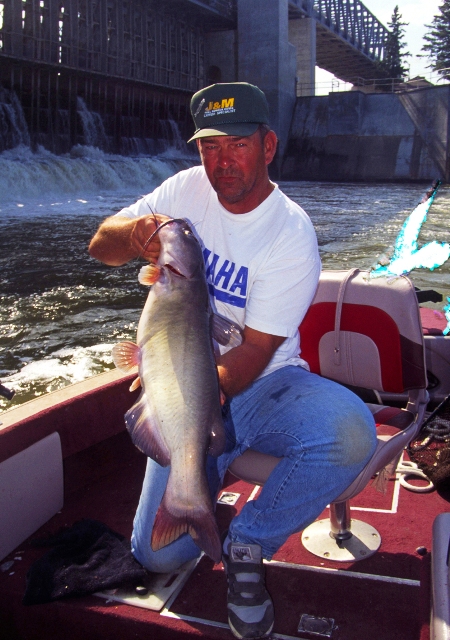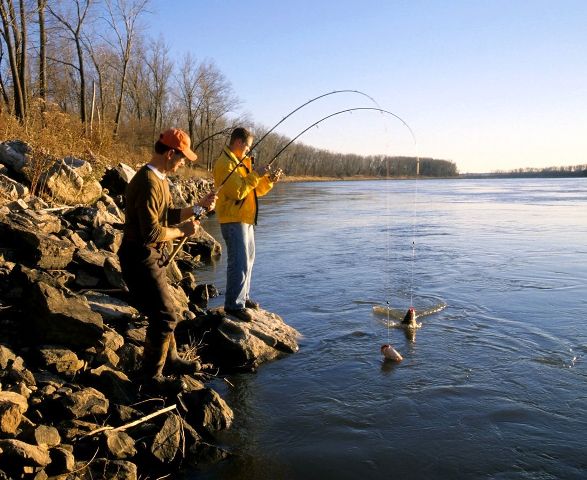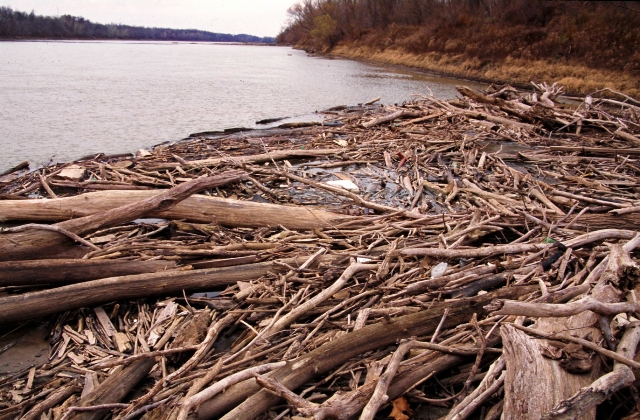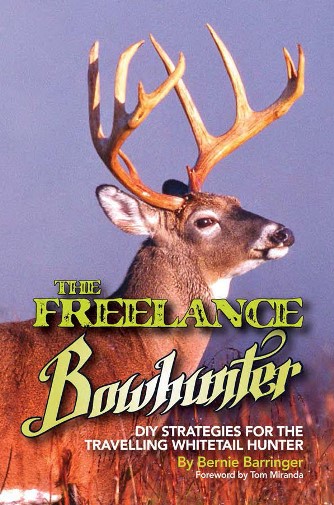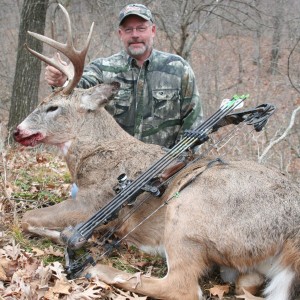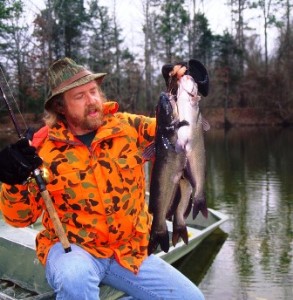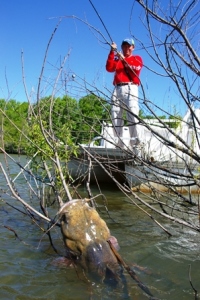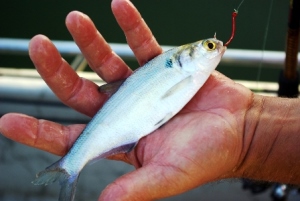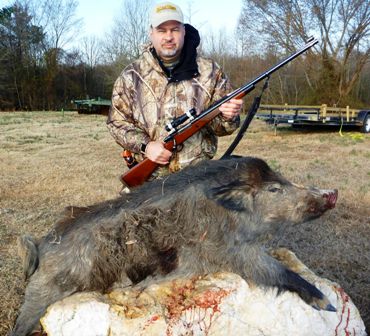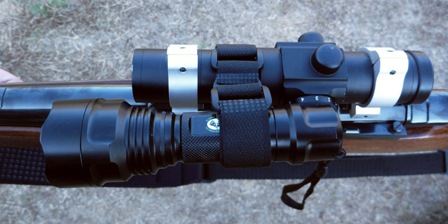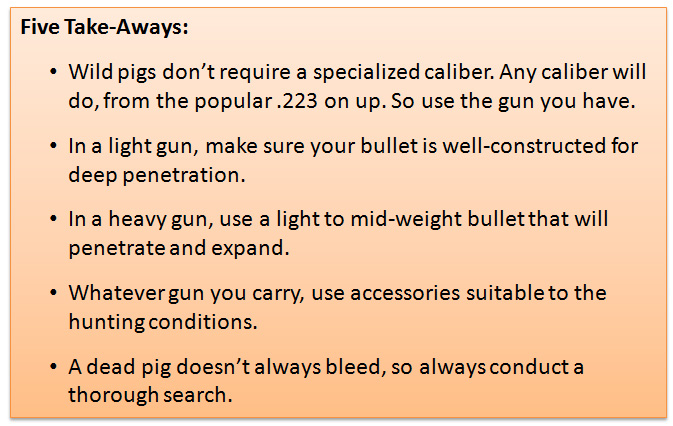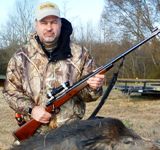By Bernie Barringer
A short course for approaching new water will help you look at local lakes with fresh eyes.
All fishermen have their honey holes. You know – those spots you go back to over and over because they always seem to produce. It’s like we fish our memories. But did you ever wonder what it would be like to approach the lake from a completely new perspective?
If you fished the lake for the very first time, how would you approach it? And here’s the real burning question: If a pro bass angler came to your lake without any knowledge of it, would he find a honey hole you didn’t know about; one that was there all the time? Chances are he would.
Bass use different areas at different times of the year. That’s why you can catch fish after fishing one spot, but a couple weeks later you can’t buy a single bite at that spot. Even the best honey holes have peak times when they’re good, and times when they’re as barren as the Sahara Desert.
Chad Foster is an up-and-coming bass pro who grew up fishing the hundreds of lakes of North Central Minnesota. He now lives in St. Cloud, Florida working his way up the ranks as a professional bass fisherman. I chatted with him about fishing in unknown waters, and he offered up some of his best bass fishing tips. How would he approach fishing a lake he has never seen before? His answers are truly revealing. His approach on how to fish for bass in new water will help you look at your lake with fresh eyes!
Structure and Cover
“The first thing to look at is what kind of cover and structure is available,” he told me. “It will be different depending on whether it’s a river, reservoir or natural lake. It’s also going to be different based on water clarity. You’ll have good weed cover out to 15 feet or more in clear lakes, but lakes with murky water may not have weeds below 5 five feet. If that’s the case, the bass will be relating to hard cover such as logs, rocks and other objects in the water.”
Time of Year
But the most important factor in determining how to fish for bass is the time of the year and the water temperature associated with it. “You need to know if the fish are in pre-spawn, post-spawn summer or fall patterns. You can eliminate a lot of water by finding that out.”
Eliminate Water
This is a huge part of finding fish.To “eliminate water” means to know where the fish will not be. Foster claims that’s a lot easier than just going to find some fish. For example, in the early spring, bass will look for the warmest water of the lake, so you can eliminate cold water.
“When the water gets above 50 degrees, the males will move into the back bays, looking for the warmest water they can find. The females will be on the first piece of structure just outside those spawning areas. That may be emerging weeds, a drop-off, a rock pile, hump or whatever.” To find these larger females Foster likes to use a bait that covers water, such as a Rat-L-Trap, crankbait or spinnerbait. Bass tend to be schooled, so once he catches a fish, he slows down and thoroughly fishes the area with Outkast Pro Swim Jig or a plastic worm.
Water Depth
“When the water gets into the 60s, bass will be quite shallow as the spawn starts, although I’ve seen bass bedded in ten feet or more. Often you can fish a jig, a worm or a Senko across these flats and catch spawning bass, even though you won’t know if they’re on beds or not.” The shallow bass are relating to cover such as wood or reeds, and can be caught on spinnerbaits.
Where Structure Is Important – and When
“Structure is most important after the spawn,” he says. “The fish can be found on the first main piece of structure outside the spawning area.” The weeds are growing quickly so that’s a good place to try, as is any major irregularity in the bottom such as a hump or steep break. These fish are feeding heavily while they recover from the spawn. Foster suggests you fish these spots with slow presentations such as a drop shot rig, an Outkast RXT jig with pork, or a Carolina rig. Look specifically for small spots on large structures – inside turns in weedlines, or a rockpile on a point. These places can be great honey holes every year at this time.
Weeds
By summer, weeds are a big part of the location puzzle and can affect how to fish in certain areas. “Coontail, cabbage and milfoil all hold fish, but I have found that the largest bass tend to be found in isolated clumps of weeds off the main weedbed. They’re feeding on bluegills, crappies or whatever bait forage is in the lake.” He says that a clump of weeds on a point or hump can hold some of the largest fish of the lake and they will often be there for weeks. “During the hottest part of the summer, like when the water reaches 80 degrees, bass will often back into the thickest weeds they find to ambush prey and often seek shade in lily pads or under docks.”

These tips to approaching unfamiliar water are helping Chad Foster move up the ranks in the pro bass fishing circuit. (Bernie Barringer photo)
Where Bass Move
Fall brings new challenges, and how to fish with these challenges can be difficult. “Bass can be about anywhere in the fall. They can be suspended over deep water chasing baitfish in the open, or they can be back to the shallows. They tend to spread out in the fall so you have to cover a lot of water. Once you find them, you may find a lot of them. They are often in huge schools.”
Cover More Water
He suggests you use horizontal baits he calls “search baits” such as crankbaits that allow you to cover a lot of water. When you find a school of fish you can slow down, but for the most part, these fish are actively feeding before winter so whatever you put in front of them gets eaten. That’s why you should use a bait that spends a lot of time at their depth.
Foster’s short course on how and where to find fish will tell you why the bass may be here today and gone tomorrow. Use his bass fishing tips on your home lake and you’ll add some new honey holes to your list. The fish are still out there and you now have a better idea where to look and how to fish for them.
Have a taste for more than just bass? Click here.
Bernie Barringer is a lifelong angler who has competed in professional walleye tournaments. He enjoys fishing for all species and writing about his experiences for many outdoor magazines.
Download your FREE copy of…
5,222 total views, no views today


